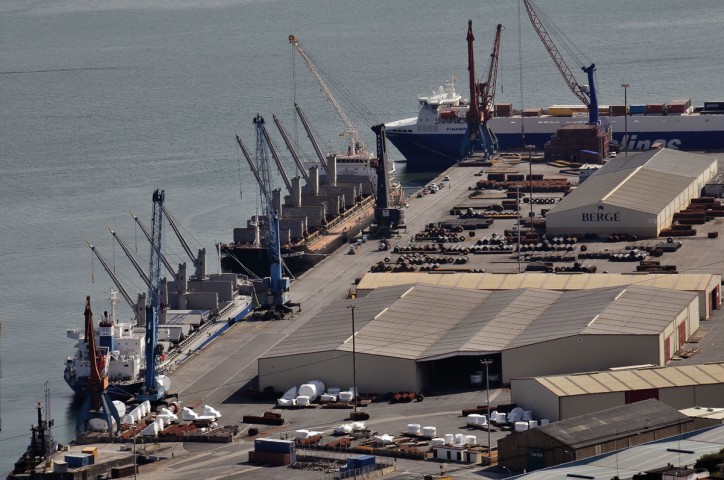The Port of Bilbao closed 2017 with a 7% traffic growth, which supposes a 2.2 million-tonne increase over 2016. This is the greatest yearly tonnage increase in the Port since 2006. As a result, traffic – excluding both local traffic and supplies- stands at 34.2 million tonnes. The accumulated increase since 2013, the year when recovery after the economic crisis began to appear in sight, has already reached 18%.
All types of packaging showed favourable behaviour. The main tonnage increases were in the liquid bulks group, and in goods such as natural gas (+811,000 tonnes), gasoil (+470,000) and crude oil (+277,000). In dry cargo there were outstanding increases in scrap iron (+120,000), iron and steel products (+101,000) and other minerals (+94,000 tonnes).

Container traffic stood at 604,870 TEUs, with a 1.37% increase. Here, the growth in refrigerated containers (+2%) also stands out, and is in line with the Port of Bilbao commitment to being a distribution centre for perishable goods.
In addition, 5,514 pieces classified as heavy loads or project cargo, due to their great weight, length, width or height, were shipped. This figure supposes a significant 23% increase over the previous year.
Ferry and cruise passenger traffic moved 186,546 people (-2%). There were 123 ferry calls and 61 cruises. The latter figure supposes ten cruise vessels more than in 2016 and a record for the new Getxo cruise maritime station in its opening year.
The European Atlantic is still the main geographical zone with a 41% market share. This is followed by the North American Atlantic and the African Atlantic. By countries, the United Kingdom still stands out with 16% growth, which thus consolidates Bilbao as the leading port in Spain for trade with Britain. Mexico and the United States follow as second and third markets.
Turnover increases 5%, allowing reduction in Port tariffs
Turnover rose to 68.8 million euros, 5.47% more than the 65.2 million invoiced in the previous year, while funds generated reached 37.0 million.
There was no further bank debt, with net bank debt standing at 139.8 million euros, 1.08 times Ebitda, thus maintaining, a debt profile much lower than that of the Spanish port system average, which stands at 1.56 times Ebitda.
Further income of 4,211,166 euros was received from the European Commission Infrastructure Programme under the TEN-T 2012 Efficient Operations and CEF 2015 Connecting Europe Facilities, corresponding to the work on the First Phase of the Central Pier in the Extension of the Port of Bilbao and to the Pancorbo Port-Rail Terminal respectively.
Due to its sound financial situation, and in line with the strategy to reduce the cost of goods passing through the Port of Bilbao, in 2018 the Port Authority will gradually apply a reduction of up to 5.6 million euros until 2022, which is equivalent to 7.5% of its invoicing.
More specifically, throughout 2018, a reduction of 4.1 million euros in port taxes is scheduled calculated annually in accordance with the valuation of the lands and water of the Port, and a 10% decrease in the basic amount of the goods tax (T-3). The coming into force of the lands evaluation is pending approval by the Ministry for Economic Development and the reduction in the goods tax on the publication of the General Law for State Budgets for 2018.
Source: Port of Bilbao